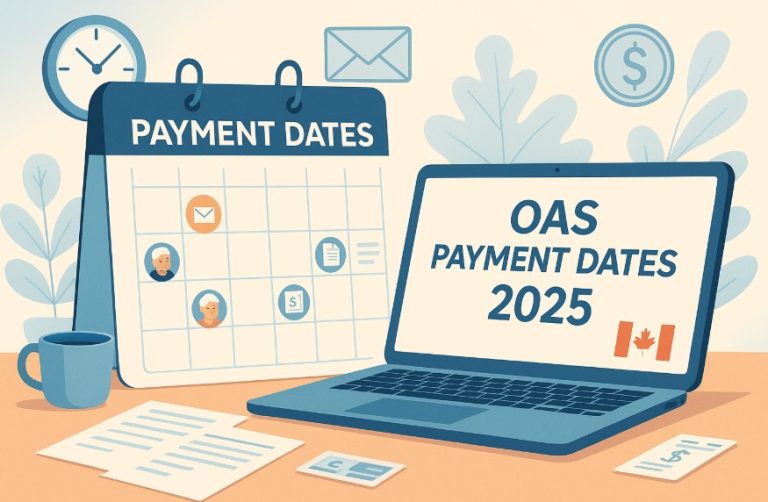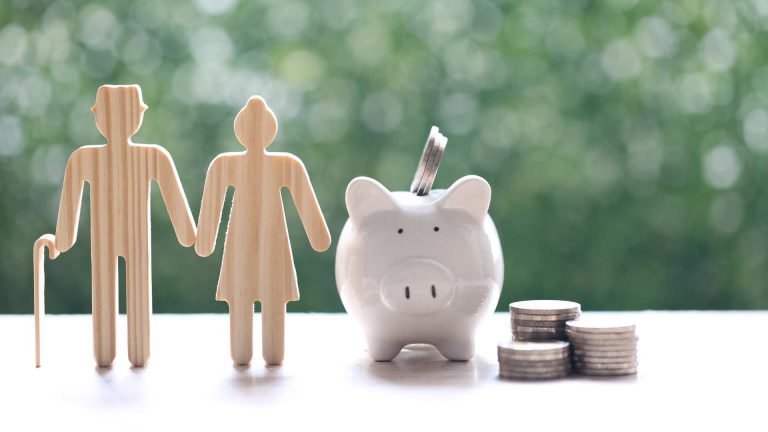Have you ever wondered what makes a bank draft one of the most trusted payment methods in Canada?
Whether you’re buying a home, paying for a vehicle, or handling a high-value transaction, understanding the role of a bank draft is crucial. But how does it work, and why is it often preferred over other payment methods?
In this guide, we’ll answer all your questions about bank drafts. From their security features and costs to their differences compared to certified cheques and money orders, you’ll gain a clear understanding of when and why to use them.
If you’ve ever hesitated to use a bank draft or felt uncertain about its process, this comprehensive guide is here to help.
What is a Bank Draft in Canada?

A bank draft is a secure payment method issued by a bank on behalf of its customer. It acts as a guaranteed form of payment, as the funds are withdrawn from the payer’s account and held by the bank until the recipient cashes or deposits the draft.
Unlike personal cheques, which may bounce if there are insufficient funds in the account, a bank draft ensures that the payment is fully covered.
Typically, a bank draft is used for significant transactions, such as purchasing real estate, vehicles, or large-scale equipment, where security and reliability are essential.
It is a physical document that contains the bank’s name, the payer’s details, and the recipient’s information.
In Canada, bank drafts are widely recognized and accepted as a trustworthy way to transfer funds securely. However, it’s crucial to understand how they work to avoid confusion or misuse.
How Does a Bank Draft Work in Canada?
A bank draft is a secure payment method in Canada, guaranteeing the recipient will receive the stated amount. When you request a bank draft, your bank debits the specified amount from your account and holds it in its internal reserves, ensuring the funds are fully backed by the bank, not just your personal balance.
The bank then issues a physical draft containing key details such as the payer’s name, the recipient’s name, and the exact transfer amount. You deliver the draft to the recipient, who can cash or deposit it at their bank. Since the funds are guaranteed by the issuing bank, a bank draft is treated as equivalent to cash.
This method is widely used for high-value transactions, such as real estate down payments or large purchases, offering security and reliability for both parties while minimizing payment risks.
Why Would You Use a Bank Draft?

A bank draft is often the preferred payment method for large transactions or situations requiring guaranteed funds.
Here are the key reasons why you might choose a bank draft in Canada:
- Security for Large Payments: Unlike personal cheques, which might bounce due to insufficient funds, a bank draft ensures the payment is covered because the issuing bank guarantees the amount. This makes it ideal for transactions such as home purchases or paying for expensive equipment.
- Widely Accepted Payment Method: Bank drafts are recognized and trusted by institutions and businesses across Canada. This reliability makes them suitable for payments where trust and assurance are critical.
- Proof of Payment: A bank draft provides clear documentation that the payment has been issued. Both the payer and the recipient benefit from this transparency.
- Fraud Prevention: Since the funds are handled directly by the bank and require identity verification during issuance, bank drafts reduce the risk of fraud compared to cash payments.
- International Payments: In some cases, bank drafts can be used to send money across borders, making them a versatile option for global transactions.
Using a bank draft ensures peace of mind for both the payer and the recipient, especially for high-stakes transactions. However, it’s essential to keep the draft secure to prevent unauthorized use.
How Can You Get a Bank Draft in Canada?
Getting a bank draft in Canada is straightforward if you have an active bank account and sufficient funds.
Follow these steps:
- Visit Your Bank: Go to your bank or credit union in person for identity verification and a secure transaction. Some banks may allow online requests, but you’ll often need to pick up the draft at a branch.
- Provide Required Details: Share the recipient’s name, the exact amount, and any additional instructions requested by the bank.
- Pay the Fee: Canadian banks typically charge $7 to $10 for issuing a bank draft, though fees may vary based on account type.
- Funds Deduction: The bank transfers the draft amount from your account to its reserves, guaranteeing payment.
- Receive the Draft: Verify the details on the physical draft before leaving.
Keep the draft secure and deliver it promptly to the recipient to ensure a smooth transaction. Some banks in Canada also allow you to request drafts through online banking platforms, but you might still need to pick up the draft at a branch. Always keep the document secure and deliver it promptly to the recipient.
What Are the Costs Associated with a Bank Draft?

Bank drafts are a reliable and secure payment method often used for significant transactions, but they are not free of costs. These charges can vary between financial institutions in Canada based on factors like account type, transaction specifics, and additional services related to the draft.
Here’s what you can expect:
- Issuance Fee: Banks charge a small fee for creating a bank draft. In Canada, this fee typically ranges from $7 to $10, depending on the bank and the account type. Some premium accounts may include a certain number of free drafts annually.
- Currency Exchange Fees: If the bank draft is issued in a foreign currency, additional fees for currency conversion may apply. The rates and charges depend on the bank’s policies and the exchange rate at the time of issuance.
- Replacement or Cancellation Costs: In cases where a bank draft is lost or needs to be canceled, banks may charge a replacement or cancellation fee. This fee can vary and may also require additional steps, such as signing an indemnity agreement.
- Recipient’s Bank Fees: Some banks may charge the recipient a processing fee, particularly for international drafts. It’s a good idea to verify with the recipient if any fees will be deducted on their end.
Understanding these costs ensures you’re fully aware of the expenses involved in using a bank draft. Checking your bank’s fee structure beforehand can help avoid unexpected charges.
What Is the Difference Between a Bank Draft, a Certified Cheque, and a Money Order?
Bank drafts, certified cheques, and money orders are secure payment methods, but each serves different purposes based on transaction size and security needs.
- Bank Draft: Issued and guaranteed by the bank, making it ideal for large transactions like home purchases or business deals. It offers the highest level of security but often comes with higher fees.
- Certified Cheque: Drawn from the payer’s account, with the bank certifying that funds are available. Typically used for medium-sized transactions, such as rent or car payments, it depends on the payer’s account balance and can be invalidated if funds are withdrawn before use.
- Money Order: Prepaid for a fixed amount, suited for smaller transactions under $1,000. Commonly used for personal payments or sending money abroad, it’s more affordable but less secure for high-value transactions.
Bank drafts offer the highest level of security and are ideal for large transactions, certified cheques are better for moderate payments, and money orders work well for smaller amounts. The choice depends on the value of the transaction and the level of assurance needed.
Is a Bank Draft Secure for Large Transactions?
A bank draft is widely regarded as one of the most secure payment methods for large transactions. This level of security comes from how the draft is issued and backed by the bank itself.
Unlike personal cheques, which rely on the payer’s account balance at the time of processing, a bank draft guarantees that the funds are available.
When issuing a bank draft, the bank immediately withdraws the specified amount from the payer’s account and holds it in its internal reserves.
This ensures the payment is fully covered and eliminates the risk of insufficient funds. The draft is printed on official bank stationery with advanced security features, making it difficult to forge or tamper with.
For significant transactions such as property purchases, vehicle sales, or other high-value deals, the reliability of a bank draft provides peace of mind for both parties. Verifying the authenticity of the draft before completing the transaction is crucial to avoid potential fraud.
Can You Cancel a Bank Draft?

Canceling a bank draft is possible, but it requires meeting specific conditions, as the draft is a guaranteed payment instrument backed by the bank. Unlike personal cheques, which can be stopped by the issuer, a bank draft involves additional steps to ensure the process is secure and legitimate.
To cancel a bank draft, you will need to visit the issuing bank and provide proof of identity, along with the original bank draft or proof of purchase. The bank will verify that the draft has not been cashed or deposited.
If the draft is still outstanding, the bank may issue a refund after deducting a cancellation fee, which varies depending on the institution.
If the draft is lost or stolen, the process may involve signing an indemnity agreement to protect the bank against potential claims if the draft is misused. This additional step ensures that the bank remains secure in case the draft is later found or fraudulently presented.
Canceling a bank draft is not as simple as stopping a cheque, so it’s essential to handle the draft carefully and deliver it promptly to the recipient.
Conclusion
How does a bank draft fit into your financial decisions? Whether it’s securing a large purchase or providing peace of mind during significant transactions, bank drafts offer reliability and security.
By addressing common concerns like costs, cancellation, and fraud prevention, this guide highlights why bank drafts remain a go-to choice for Canadians.
Alternatives like certified cheques and wire transfers have their place, but bank drafts stand out for guaranteed funds and trustworthiness.
As you navigate financial transactions in Canada, remember that choosing the right payment method depends on your specific needs. Now that you’re equipped with knowledge, you can confidently decide if a bank draft is the right choice for your next transaction.
FAQs About What Is a Bank Draft?
What is a bank draft used for?
A bank draft is used for secure and large transactions, such as buying real estate or vehicles. It ensures funds are guaranteed and reduces the risk of payment failure.
Can anyone get a bank draft in Canada?
Yes, anyone with an active bank account and sufficient funds can request a bank draft from their bank. Identification and specific details are required.
How long does a bank draft take to process?
The issuance is immediate once requested at a bank. However, clearing the draft after deposit may take 1–2 business days.
Is a bank draft better than a certified cheque?
A bank draft is generally more secure as the bank guarantees the funds, while a certified cheque relies on the payer’s account balance.
Can a bank draft be cashed by anyone?
No, only the named recipient can cash or deposit the bank draft. Proper identification is required for security purposes.
What happens if a bank draft is lost?
If lost, you must notify the issuing bank immediately. A replacement or cancellation may require signing an indemnity agreement and paying a fee.
Can a bank draft be used internationally?
Yes, a bank draft can be issued in foreign currencies and used for international payments. Additional exchange fees may apply.




